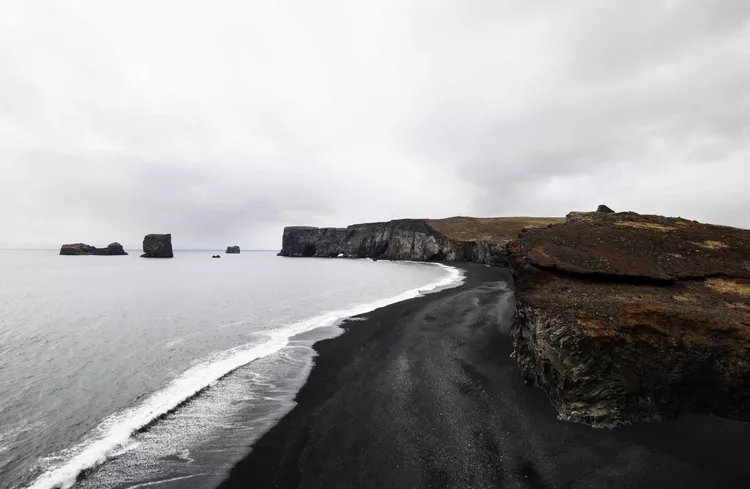Summary
Reynisfjara: Exploring Iceland’s Iconic Black Sand Beach
If you’ve heard of Iceland’s stunning black sand beaches, you’ve certainly heard of Reynisfjara. Located on the southern coast, Reynisfjara is easily accessible right before you reach Vik when driving from Reykjavik. This awe-inspiring area is celebrated for its unique geology, including black sand beaches, striking basalt columns, and a series of fascinating rock formations that hold significant importance in local folklore.
According to legend, the basalt columns, collectively known as Reynisdrangar, were once two trolls who attempted to pull a ship from the sea onto the land. However, they became petrified during daylight, turning into stone. Regardless of belief in this tale, it adds another layer of intrigue to this unique natural wonder of Iceland.
Getting to Reynisfjara is straightforward; however, understanding the essential aspects of visiting this breathtaking location is crucial. From safety tips regarding waves to exploring the various hikes nearby, thorough research will enhance your experience.
How to Get There
Like most natural attractions in Iceland, Reynisfjara is difficult to miss. Numerous signs lead you to the black sand beaches from Route 1. You will take the exit for Route 215, which is just a 10-minute drive from the main road. If you’re coming from Reykjavik, you will arrive at Reynisfjara before hitting the charming fishing village of Vik. Its central location makes it an ideal stop during a southern road trip from Reykjavik to Jökulsárlón, as it lies conveniently between the east and west coasts, about two-and-a-half hours from either destination.
What to Expect When You Get There
There is a small café named Black Beach Restaurant that offers a limited selection of food and drinks. Additionally, visitors can find public restrooms on-site. Parking is available for free, although finding a spot can be a challenge as the lot tends to fill quickly.
What to Wear
Icelandic weather can be unpredictable. Therefore, it’s best to dress in layers and bring along a windbreaker. Wind can be formidable, and having a protective layer will enhance your comfort significantly. This is not a tropical beach, so skip the sandals and swimsuits; opt instead for sturdy hiking boots which will perform best on the rocky terrain.
Safety
The alluring waves may tempt some to get closer, but it’s essential to maintain a safe distance. Reynisfjara is notorious for its dangerous sneaker waves—unexpectedly powerful waves that can occur suddenly. Warning signs are posted at the end of the Reynisfjara parking lot. Stay vigilant, keep your distance, and observe the tidal patterns for a safe visit.
The Best Time to Visit
If you wish to experience the impressive basalt columns—and you certainly should—timing your visit with the tides is crucial. When water levels rise, it becomes perilous to walk near the columns due to crashing waves that can strike unexpectedly. Utilizing resources like Surf-Forecast can aid in examining the tides in real-time. Visiting during low tides allows for safe exploration of shallow caverns, with the most notable being Halsanefshiller.
As with most of Iceland’s breathtaking natural sites, crowds can swell during sunset. Reynisfjara is no exception, making it crucial to plan accordingly. The convenience of nearby parking has led to increased accessibility for both locals and travelers. Many bus tours frequent the area, particularly between 2 p.m. and 5 p.m. To avoid crowds, consider visiting late in the evening when tides are lower.
Nearby Hikes
If you’re interested in a scenic view of Reynisfjara, several hiking opportunities await you. Begin by visiting the church that overlooks the village; its red roof is a distinguishing feature. The expansive grounds surrounding it are filled with trails for all skill levels, clearly marked to assist you. For those seeking a more challenging adventure, trek uphill to the right at the first trail junction near the church. This leads to a 4- to 5-hour hike to Mount Hatta, the highest peak surrounding Vik at 500 meters. Additionally, consider exploring the Mýrdalsjökull glacier situated in the south’s highlands, but ensure you come prepared with appropriate gear, including crampons and warm clothing.





